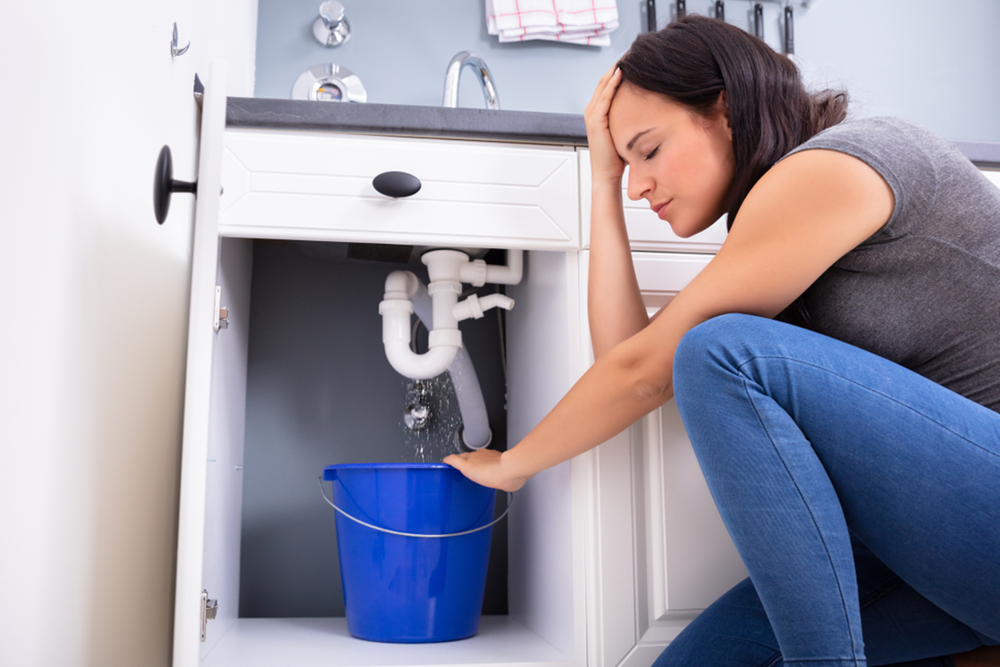Have you been looking for suggestions about Why Is My Garbage Disposal Leaking From the Bottom??

Garbage disposals are important cooking area devices that help in taking care of food waste effectively. Nonetheless, a dripping garbage disposal can be a discouraging and unpleasant trouble to handle. Luckily, lots of leaks can be taken care of easily with a couple of easy steps. In this write-up, we will talk about just how to deal with a leaking garbage disposal properly.
Introduction
Garbage disposals are mounted under kitchen area sinks and are developed to shred food waste into smaller items, allowing it to go through the pipes system conveniently. While these tools are normally trustworthy, leaks can take place over time as a result of wear and tear, loose links, or damages to the system.
Common Reasons For Leaks in Garbage Disposals
Worn Seals and Gaskets
Seals and gaskets play an important role in protecting against water from leaking out of the garbage disposal. Gradually, these components can degrade, causing leaks around the disposal system.
Loose Connections
The links in between the garbage disposal and the plumbing system can end up being loosened gradually, creating water to leakage out during operation.
Splits or Holes in the Disposal Unit
Physical damage to the waste disposal unit, such as splits or holes in the housing, can likewise cause leakages.
Recognizing the Resource of the Leak
Before trying to deal with a dripping waste disposal unit, it is necessary to identify the source of the leak. This can normally be done via visual examination or by performing straightforward examinations.
Visual Examination
Evaluate the waste disposal unit system carefully for any kind of indications of water leakage. Pay very close attention to areas around seals, gaskets, and link factors.
Examining for Leakages
One means to test for leaks is by running water with the disposal system and checking for any type of visible signs of leakage.
Devices and Products Needed for Repairing a Leaking Waste Disposal Unit
Before starting the repair work process, collect the required devices and products, consisting of a screwdriver, flexible wrench, plumber's putty, replacement seals or gaskets, and epoxy or patching material for fixing splits or openings.
Step-by-Step Guide to Dealing With a Dripping Waste Disposal Unit
Turn Off the Power
Prior to trying any type of repair work, make certain that the power to the garbage disposal device is shut off to stop the danger of electrical shock.
Locate the Leak
Determine the specific location of the leak and identify the cause.
Tighten up Links
Utilize a wrench to tighten up any kind of loose connections in between the disposal unit and the pipes system.
Change Seals or Gaskets
If the leak is due to used seals or gaskets, get rid of the old elements and replace them with brand-new ones.
Patching Cracks or Openings
For cracks or holes in the disposal device, usage epoxy or an ideal patching product to seal the broken location.
Checking the Waste Disposal Unit After Repair
Once the repair work is complete, test the waste disposal unit by running water via it to make certain that the leakage has been settled.
Preventive Upkeep Tips to Avoid Future Leakages
To stop future leakages, it is essential to perform regular upkeep on your waste disposal unit. This consists of keeping it tidy, staying clear of putting non-food things or tough objects down the disposal, and periodically checking for leakages or various other concerns.
Verdict
Finally, dealing with a leaking waste disposal unit is a fairly uncomplicated procedure that can be finished with fundamental tools and products. By adhering to the actions outlined in this short article and practicing preventive upkeep, you can keep your garbage disposal in good working condition and prevent costly repairs in the future.
What to Do About a Leaking Garbage Disposal
A leaking garbage disposal often goes unnoticed until you confront a sopping cabinet, a foul-smelling puddle, or an audible drip-drip-drip from the unit. The fix can be frustrating, too, because the leak can stem from a number of components in the system. Fortunately, with a little sleuthing, you can zero in on the leak and—depending on the exact location—stop the icky oozing and repair the component that caused it. Worst case scenario, if it turns out that the garbage disposal must be replaced, installing a new one is a reasonable do-it-yourself task for those with basic plumbing skills. Read on to keep the cash you’d otherwise hand over to a pro.
Prepare to find the leak
Prior to testing the garbage disposal for leaks, unplug it at the wall outlet and turn off the power from the breaker box to prevent electrical shock. Then insert a watertight sink stopper into your sink drain and wipe the unit dry with a clean cloth. In any handy container, mix a few drops of food coloring into a few cups of water, and pour the dyed water onto the sink stopper to help you locate the leak.
Investigate the source
the top, where the disposal meets the sink drain the side, where the dishwasher hose or main drain pipe connects to the disposal or the bottom of the unit Inspect each of these locations while gliding a light-colored rag over the unit; the dyed water will readily show on the rag and reveal the location of the leak. If a leak isn’t immediately apparent, remove the sink stopper and pour a few more cups of dyed water down the sink drain, then check for leaks again. Leaks near the top of the unit are more likely to show themselves while the sink is plugged, while side and bottom leaks are more noticeable while the sink is unplugged.
The metal sink flange that sits directly inside the sink drain is typically sealed around the top with plumber’s putty (a clay-like sealant) and then secured from under the sink with bolts. If the plumber’s putty deteriorates, or the bolts loosen, the flange can no longer form a watertight seal between the sink drain and the disposal—which could cause a leak at the top of the unit.
To reseal the leaky flange, you must first detach the garbage disposal. Start by loosening the screws securing the main drain pipe to the disposal, then loosen the screws in the metal clamp securing the dishwasher hose to the disposal and detach the drain pipe and dishwasher hose from the disposal. Loosen the screws in the mounting ring that connects the disposal to the metal mounting assembly beneath the sink, then pull down the disposal and carefully set it on a clean, dry surface. Loosen the bolts in the mounting assembly with a wrench, then pull down the mounting assembly and set it near the disposal.

We had been brought to that report about Garbage Disposal Leaking From Bottom from an associate on another web property. Sharing is good. One never knows, you might be doing someone a favor. I appreciate reading our article about The Handy Guide To Fixing Your Garbage Disposal Leaking.
Show Details